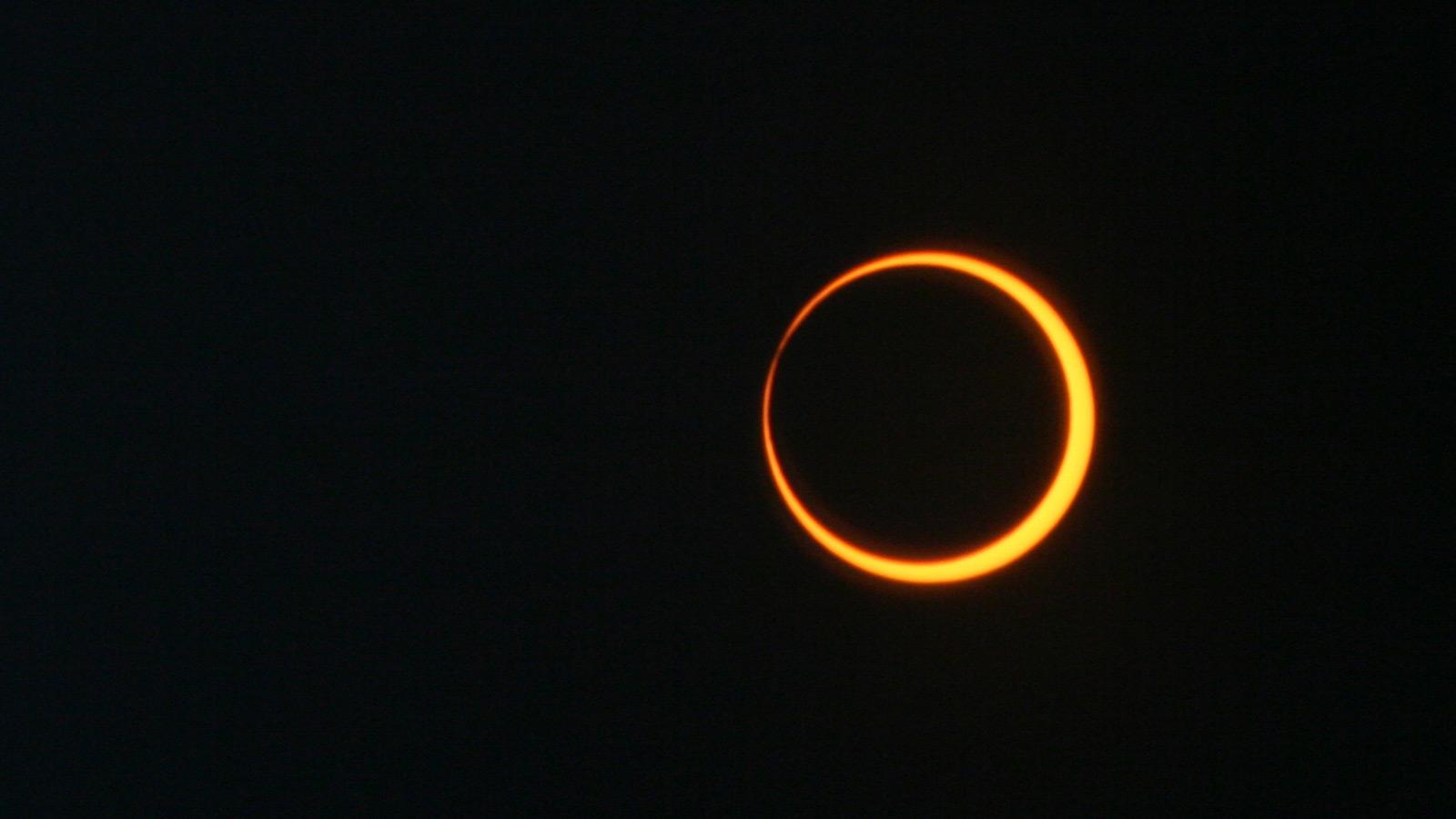Oswego students will have an opportunity to do research sponsored by NASA and the National Science Foundation during October's annular solar eclipse, where the moon moves over the center of the sun to create a ring of fire appearance. (NASA image)
The annular solar eclipse coming up in October offers a shining opportunity for SUNY Oswego students to do research in a program sponsored by NASA and the National Science Foundation.
Up to 16 students can take part in a research experience led by the team of Katelyn Barber and Yonggang Wang of the atmospheric and geological sciences faculty and Natalia Lewandowska and Shashi Kanbur of the physics faculty. Up to six of those students will have the additional experience of heading to New Mexico in October, where the ideal conditions are expected to exist for the annular event –- meaning the moon moves in front of the sun’s center to create what looks like a ring of fire. All students will actively participate in the April 2024 total solar eclipse in Oswego.
The Nationwide Eclipse Ballooning Project is a NASA and NSF-sponsored program that will broaden participation of STEM learners by immersing teams from a wide range of higher education institutions in an innovative NASA-mission-like adventure in data acquisition and analysis through scientific ballooning during the Oct. 14, 2023, annular solar eclipse, and the April 8, 2024 total solar eclipse. Student participants will work with atmospheric science experts throughout the project and will publish results in peer-reviewed journals.
“This is a really big project,” Barber said. “That Oswego was able to become part of the project is a major opportunity for our students.”
Teams will launch helium weather balloons with radiosondes into the stratosphere hourly to measure atmospheric phenomenon under rare conditions.
The project will connect to a course and lab, MET390, that will meet at 12:35 to 2:05 p.m. on Tuesdays (with a lab from 2:20 to 5:15 p.m.) and Thursdays, and include training on weekends.
“Launching a weather balloon comes with numerous steps to ensure success, so we expect to provide up to 80 hours of hands-on training,” Barber said.
The deadline to register is Feb. 24. Those interested can attend an information session on the project from 5 to 7 p.m. on Thursday, Feb. 16, in 174 Shineman.
Barber emphasized that non-science majors are encouraged to apply for the course given a variety of needs the project will entail.
“We would love to have as many as five or six non-STEM majors,” Barber said. “We’re looking to livestream it, so it would be great to have a communications specialist. It’s open to anybody who wants to be actively engaged in citizen science.”
The New Mexico part of the project, while limited in size due to logistics, will involve several days but travel and lodging costs are covered by the grant.




